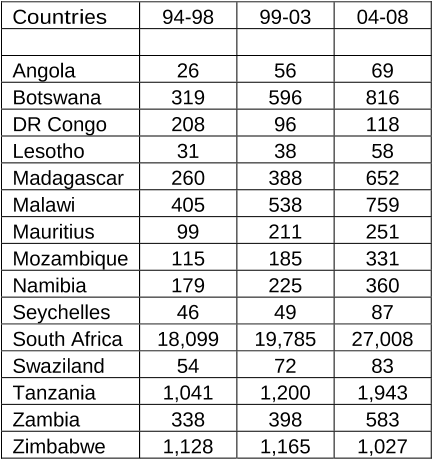




Did you find this useful? Give us your feedback











1 citations
...To observe this restricted universe has been seen as an advantage as it refers to the journals that publish the articles that exert more influence in the international literature (Pouris, 2010)....
[...]
1 citations
...In another study, Pouris (2010) reported that South Africa published almost 14 times more publications than the second country in the list-Tanzania, with a total of 4184 publications from 1994 to 2008....
[...]
...When searching the literature on research productivity and impact in Tanzania, we found few African studies, which had included Tanzania in their analysis (Abrahams et al. 2009; Confraria & Godinho 2015; Pouris 2010; Pouris & Ho 2014; Onyancha 2016; Boshoff 2010)....
[...]
...Evidence also shows that the research output in Tanzania is considerably less than other countries in the African region (Pouris 2010; Boshoff 2010; Abrahams et al. 2009; Confraria & Godinho 2015; Onyancha 2016; Godinho 2013)....
[...]
...Although few studies analysis (Abrahams et al. 2009; Confraria & Godinho 2015; Pouris 2010; Pouris & Ho 2014; Onyancha 2016; Boshoff 2010) have investigated Tanzanians research productivity, there is still no comprehensive study that has been conducted to examine the patterns and impact of research…...
[...]
1,113 citations
228 citations
187 citations
...‘‘These databases currently provide the best source of information to identify the basic research activity across all countries and fields of science’’ (Tijssen 2007)....
[...]
...Examples include Shrum (1997), Narvaez-Berthelemot et al. (2002), Ingwersen and Jacobs (2004), Tijssen (2007), Pouris (1996) and others....
[...]
159 citations
119 citations